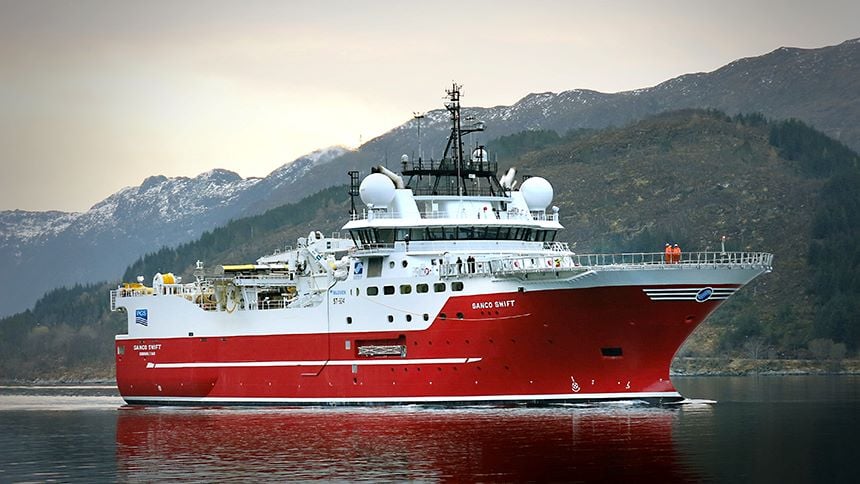Norwegian seismic company TGS has completed an ultra-high-resolution 3D (UHRD3D) survey for Community Offshore Wind in the New York Bight to provide soil condition data for designing an offshore wind project.
According to TGS, the survey started in October 2023 and lasted over eight months.
The lease area, awarded to a joint venture (JV) between RWE and National Grid Ventures during the 2022 US Bureau of Ocean Energy Management (BOEM) auction, has the potential to support up to 3 GW of clean energy capacity.
The JV secured the largest parcel in the competitive lease sale off the New York and New Jersey coasts. Using the vessel Sanco Swift, TGS surveyed the entire lease area, providing more detailed geological data than traditional 2D surveys. This is TGS’s second offshore wind site characterization project.
Doug Perkins, President and Project Director of Community Offshore Wind, stated: “Community Offshore Wind is using the latest technology to study soil behavior in our lease area to engineer our project effectively and environmentally friendly.”
“We are building a project to generate clean energy for communities in the US Northeast for roughly 30 years. The data from the survey allows us to plan with more precision and certainty than ever before.”
In the New York Bight auction, RWE and National Grid Ventures secured the OCS-A 0539 lease area with a $1.1 billion winning bid. The project could support up to 3 GW of offshore wind capacity, potentially powering around 1.1 million homes and businesses, more than twice the base scenario estimate provided by BOEM.
Community Offshore Wind began its geophysical survey in January 2023. By July, the company had selected Fugro to conduct a geotechnical investigation of the lease area. The project aims to be operational by the end of the decade.
“The acquisition of UHR3D seismic over the full lease will provide Community Offshore Wind with a solid foundation to develop their offshore wind farm in the New York Bight. Our geophysical approach to mapping and understanding the shallow subsurface layers will reduce uncertainty and speed up site characterization,” said Carel Hooijkaas, EVP of New Energy Solutions at TGS.“High demand has driven our decision to invest in an additional UHR3D streamer set, which will be operational in a few weeks.”
Original Story at www.offshorewind.biz
